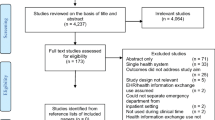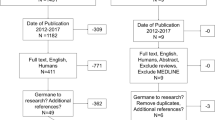Abstract
Medical organizations adopt electronic health record (EHR) and health information exchange (HIE) interoperable technologies in order to provide vital medical information needed for medical decision-making. The use of such interoperable information may lead to increased quality of care and reduced unnecessary costs. The goal of this study was to characterize the specific data components that improve the process of medical decision-making in an emergency department (ED). The outcome measures were the decision to admit/discharge a patient and differences in single-day admission rates with/without using an interoperable EHR. A database containing 3.2 million ED referrals from seven main Israeli hospitals was subjected to log-file analysis. We found that viewing medical history via the interoperable EHR significantly affects admission decisions. The data show a reduction in the number of avoidable single-day admissions, but also an increase in the rate of prolonged admissions. Previous admissions, laboratory tests, imaging and previous surgeries were the most influential information components.
Similar content being viewed by others
References
Ben-Assuli O, Leshno M, Shabtai I. Using electronic medical record systems for admission decisions in emergency departments: examining the crowdedness effect. J Med Syst. 2012;36:3795–803.
Cabrnoch M, Hasić B. Electronic health book—a unique Czech solution for eHealth. Heal Technol. 2011;1:57–69.
Coleman EA. Falling through the cracks: challenges and opportunities for improving transitional care for persons with continuous complex care needs. J Am Geriatr Soc. 2003;51:549–55.
Connelly DP, Park YT, Du J, Ampornpunt NT, Gordon BD, Bershow BA, et al. The impact of electronic health records on care of heart failure patients in the emergency room. J Am Med Informa Assoc. 2011. doi:10.1136/amiajnl-2011-000271.
Cooke MW, Higgins J, Kidd P. Use of emergency observation and assessment wards: a systematic literature review. Br Med J. 2003;20:138.
Davis FD. Perceived usefulness, perceived ease of use, and user acceptance of information technology. MIS Q. 1989;13(3):318–40.
Denman JM, Bingham P, George S. A confidential enquiry into emergency hospital admissions on the Isle of Wight, UK. Br Med J. 1997;51:386–90.
Elwyn G, Frosch D, Volandes AE, Edwards A, Montori VM. Investing in deliberation: a definition and classification of decision support interventions for people facing difficult health decisions. Med Decis Making. 2010;30(6):701–11.
Heiro E, Mäntymäki M. Managing medication information with electronic patient records—a Finnish clinicians’ perspective. Heal Technol. 2012;2:113–22.
Phansalkar S, Edworthy J, Hellier E, Seger DL, Schedlbauer A, Avery AJ, et al. A review of human factors principles for the design and implementation of medication safety alerts in clinical information systems. J Am Med Inform Assoc. 2010;17(5):493–501.
Raja AS, Ip IK, Prevedello LM, Sodickson AD, Farkas C, Zane RD, et al. Effect of computerized clinical decision support on the use and yield of CT pulmonary angiography in the emergency department. Radiology. 2012;262:468–74.
Richardson D. No relationship between emergency department activity and triage categorization. Acad Emerg Med. 1998;5:141–5.
Rokos IC, French WJ, Mattu A, Nichol G, Farkouh ME, Reiffel J, et al. Appropriate cardiac cath lab activation: optimizing electrocardiogram interpretation and clinical decision-making for acute ST-elevation myocardial infarction. Am Heart J. 2010;160:995–1003.
Shabtai I, Leshno M, Blondheimc O, Kornbluth J. The value of information for decision-making in the healthcare environment. Med Care Compunetics. 2007;4:91–7.
The National Alliance for Health Information Technology, Defining key health information technology terms, Report to the Office of the National Coordinator for Health Information Technology, April, 28 2008.
Tierney WM. Improving clinical decisions and outcomes with information: a review. Int J Med Inform. 2001;62(1):1–9.
Vest JR. Health information exchange and healthcare utilization. J Med Syst. 2009;33:223–31.
Vest JR, Jasperson JS, Zhao H, Gamm LD, Ohsfeldt RL. Use of a health information exchange system in the emergency care of children. BMC Med Inform Decis Making. 2011;11:78.
Walker J, Pan E, Johnston D, Milstein JA, Bates DW, Middleton B. The value of health care information exchange and interoperability. Heal Aff. 2005;24:10–8.
Walter S, Kostopoulos P, Haass A, Lesmeister M, Grasu M, Grunwald I, et al. Point-of-care laboratory halves door-to-therapy decision time in acute stroke. Ann Neurol. 2011;69:581–6.
Conflict of interest
The authors declare that they have no conflict of interest.
Author information
Authors and Affiliations
Corresponding author
Rights and permissions
About this article
Cite this article
Ben-Assuli, O., Shabtai, I. & Leshno, M. The influence of EHR components on admission decisions. Health Technol. 3, 29–35 (2013). https://doi.org/10.1007/s12553-013-0039-6
Received:
Accepted:
Published:
Issue Date:
DOI: https://doi.org/10.1007/s12553-013-0039-6




